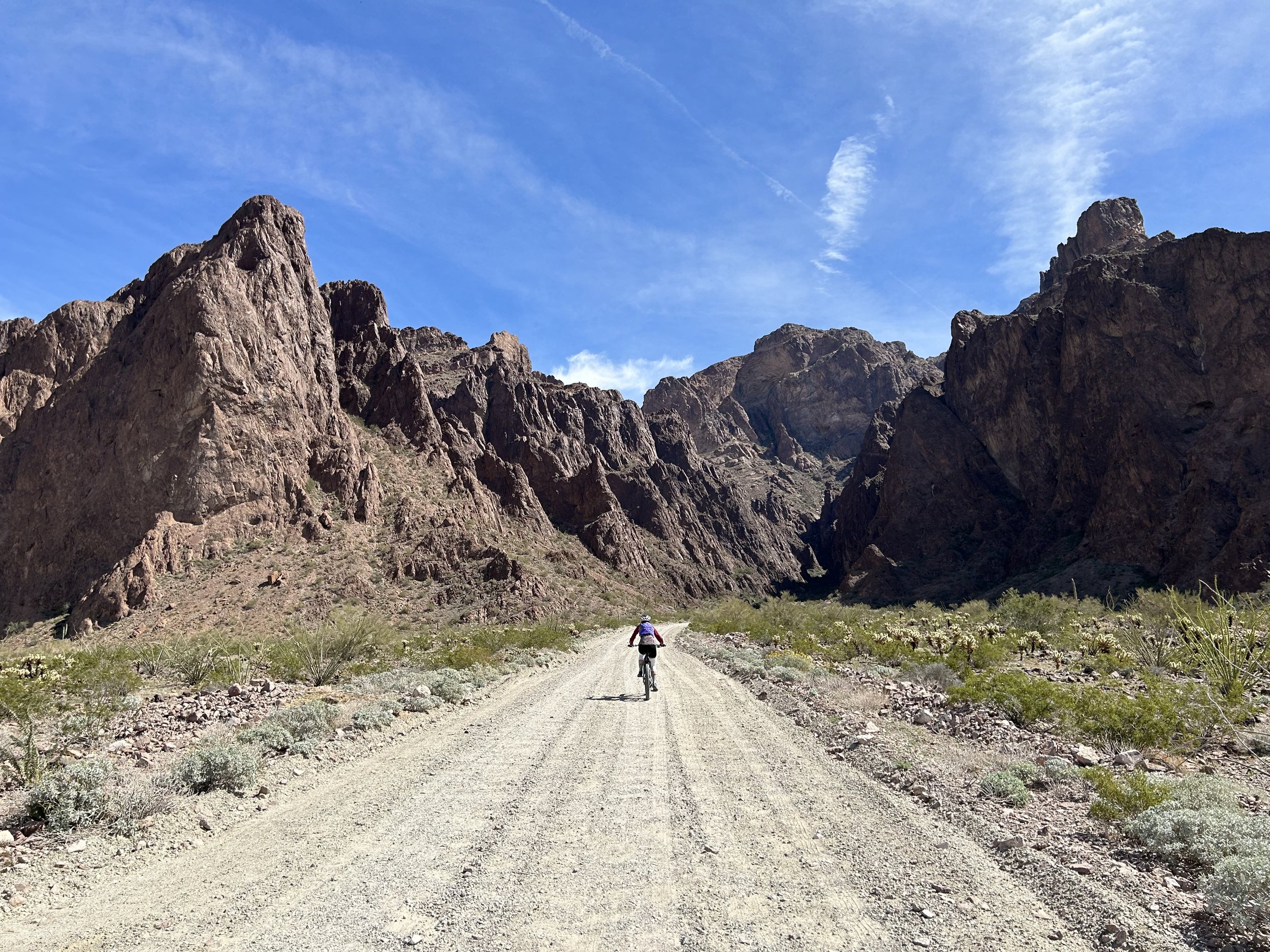
Kofa National Wildlife Refuge Bikepacking Tour
Table of Contents
Kofa National Wildlife Refuge Bikepacking Tour - Day 1 - Palm Canyon, Kofa Queen Canyon, and the Storm Approaches
Kofa National Wildlife Refuge Bikepacking Tour - Day 2 - Lightning and Thunder Amid the Peaks and Plains of Kofa National Wildlife Refuge
Kofa National Wildlife Refuge Bikepacking Tour - Day 3 - Hoodoo Cabin, Across the Little Horn Mountains, and out to Coyote Peak
Kofa National Wildlife Refuge Bikepacking Tour - Day 4 - Kofa Cabin and Yellow Poppies on the Kofa Mountains

Kofa National Wildlife Refuge Bikepacking Tour - Day 4 - Kofa Cabin and Yellow Poppies on the Kofa Mountains
The night was still, calm, and silent. We awoke feeling rested and dry. Whatever humidity left in the air was making its way out today with a few lingering high-altitude rain curtains wisping across adjacent peaks. The pipeline road we were on was well-maintained, graded, and smooth. That, combined with a tailwind, pushed us along as a great rate. We soon reentered Kofa National Wildlife Refuge and left BLM land.

Kofa National Wildlife Refuge Bikepacking Tour - Day 3 - Hoodoo Cabin, Across the Little Horn Mountains, and out to Coyote Peak
After the lightning-and-thunder show that lit up the inside of the shelter all night, we slept hard and woke to a world of clear air and saturated moisture. On the open plains of Kofa, the sun hit early and warmed early to our enjoyment. We packed up and started our way to Hoodoo Cabin where our next water resupply awaited.

Kofa National Wildlife Refuge Bikepacking Tour - Day 2 - Lightning and Thunder Amid the Peaks and Plains of Kofa National Wildlife Refuge
The patter of rain ceased as dawn ascended. No sooner had we exited the tent than the morning rain halted long enough for us to pack up our gear. It was VERY humid out and everything dribbled with moisture. We packed our bags quickly lest everything get more wet and then hit the road towards Castle Dome Mountain. All morning the clouds hung heavy in the sky as a gray blanket settled overhead. Intermittent rain dashes would sprinkle down on us before dissipating. Ocotillos and cholla sat vibrant green in the gloom.

Kofa National Wildlife Refuge Bikepacking Tour - Day 1 - Palm Canyon, Kofa Queen Canyon, and the Storm Approaches
Winter has been fecund with snow and rain this year. The South Rim has received well over 100 inches of snow; Janna and I talked with someone who's worked here for over forty years and he said this is the snowiest winter he's seen since 1986. Subsequently, we've been dreaming of warm temps and dry bike riding. Janna and I planned on doing the Stagecoach 400 for Spring Break, which I rode last year during amazing temperatures, to get some SoCal sun, mountains, and ocean. And then the week before Spring Break, another notable atmospheric river came off the coast to settle over the Southwest and bring massive inches of snow and thunderous rain. Idyllwild got caked in powder. The National Forest Service closed roads that were too muddy and trails that were too icy. San Diego looked to be doused in a week of consistent rain and mid-50s temperatures. All conditions the opposite of what we wanted. Mere days before break, we decided to quickly switch plans and find a route drier (we were still expecting rain - but intermittent) and warmer.